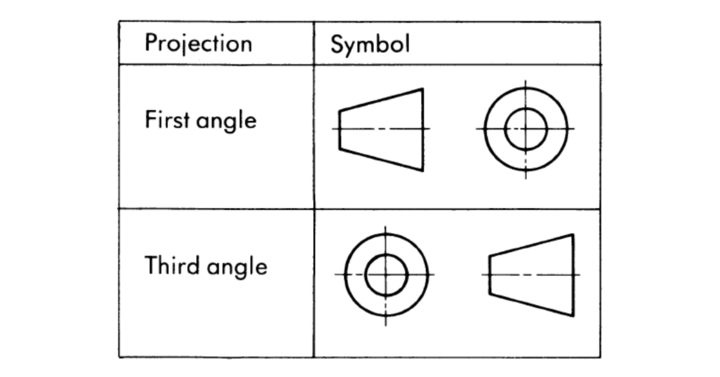Difference Between First Angle Projection and Third Angle Projection
By BYJU'S Exam Prep
Updated on: September 25th, 2023

Difference Between First Angle Projection and Third Angle Projection: In this article, we will discuss the difference between first angle and third angle projection. A 3D object is represented in a 2D plane using the orthographic projection technique. The orthographic projection technology projects 3D object views onto a 2D plane using parallel lines.
Let us discuss the difference between first angle projection and third angle projection, along with a brief introduction to first and third angle projection in the upcoming sections.
Table of content
Difference Between First Angle and Third Angle Projection
Here we have provided the difference between first angle and third angle projection based on various parameters. Except in the United States, first angle projection is a method of portraying three-dimensional things in two dimensions widely utilized in Europe and the rest of the globe. We split the plane into four quadrants to acquire orthographic views of 3D objects. The item is put in the first quadrant for the first angle projection. The third angle projection technique is the default projection system in the United States and Australia. The item is put in the third quadrant for the third angle projection.
Key Differences Between First Angle and Third Angle Projection
Let us check the difference between first and third angles projection in the table below.
| First Angle Projection | Third Angle Projection |
| The item is positioned in the first quadrant, between the plane of projection and the observer, to get the first angle projection. |
The object is positioned below and behind the viewing planes in the third angle projection, implying that the projection plane lies between the observer and the object. |
| For the first angle projection, it inserts the item between the observer and the projection plane. | The third angle projection inserts the item between the observer and the object. |
| The views in the first angle projection schema are in this order: top left, then clockwise, the Right view, Front view, and Top view. | The top view is positioned at the top of the front view, and the right view is positioned on the right side of the front view in the third angle projection schema. |
| Used in India, Europe, and Canada. | Used in Australia and the United States. |
| In this projection, the object is supposed to be placed in the first quadrant. | In this projection, the object is supposed to be placed in the third quadrant. |
First Angle and Third Angle Projection
Under the orthographic projection rule. On a 2D plane, draw a projection view of a 3D object. In this case, the horizontal plane is turned clockwise. The first angle and third angle projection systems are two types of orthographic projection systems.
Difference Between First Angle and Third Angle Projection PDF

-
First Angle Projection– The item is considered in the first quadrant, and the observer is also in the first quadrant.
-
Third Angle Projection– The item can be imagined to be in the third quadrant, and the observer is in the fourth quadrant.
What is a First Angle Projection?
One of the methods used for orthographic projection drawings is first angle projection, which is allowed universally except in the United States. This projection method puts the item in the first quadrant, in front of the vertical plane and above the horizontal plane.
In this projection, the object is positioned in the first quadrant in the first angle projection. The item is at the top of a horizontal plane and in front of a vertical plane. In India and Europe, the first angle projection is extensively employed. Between the observer and projection planes, the item is situated. In 1st angle projection, the projection plane is solid.
What is a Third Angle Projection?
In third-angle projection, unlike first-angle projection, where the projection plane is ostensibly opaque, the planes are transparent. This projection technique is mostly employed in the United States, while Japan requires using a third-angle projection schema for industrial designs.
The item is positioned in the third quadrant in the third angle projection. The item is positioned between the vertical and horizontal planes at the bottom of the horizontal plane. In the United States, third-angle projection is extensively utilized. Between the object and the observer are the projection planes. In the third angle projection, the projection plane is assumed to be transparent.
Further, check out some important related topics:


